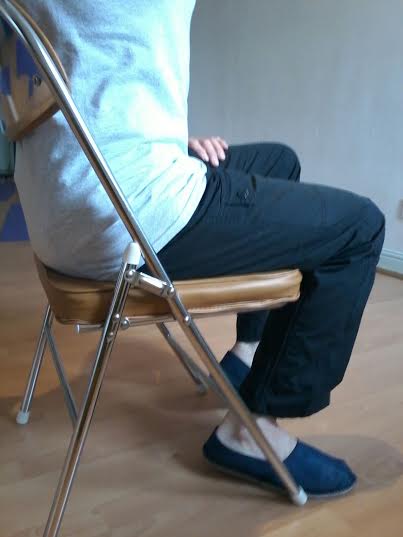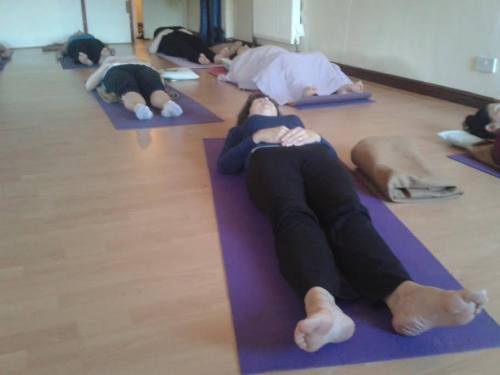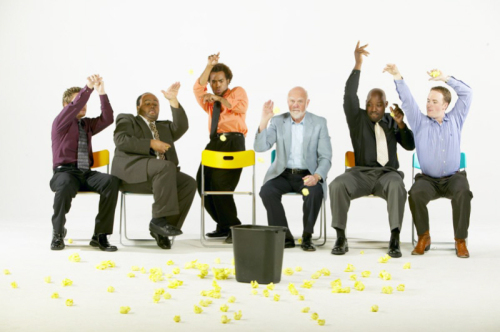I'm not fit enough to do yoga!
Posted on
I'm Not Fit enough to do Yoga!
I think it is safe to say that most people who start attending yoga classes are what they might describe as being a bit out of shape, a bit overweight, stiff and inflexible, off balance and/or experiencing stress or anxiety. They may be influenced by their doctors or other health professionals to try yoga or by a friend who is already feeling the benefits of regular yoga practice.
Of those who attend probably half keep with it for a while and the other half fall at the first yoga mat.
Of those who sack yoga sooner rather than later it is a particular category of triers who I feel most for.
Take a not uncommon situation: two middle aged lady friends (or sometimes males friends) book a yoga class together. One has tried yoga before in the past and scanty exercise since and has become stiff and inflexible and a little overweight but could be just a few weeks away from getting back on track. The other person has never tried yoga or much of any physical exercise perhaps since school days, they are well over weight as well as being stiff and inflexible, they may also be experiencing poor balancing skills and poor range of movement at the best of times.
After one class either the first person keeps attending - alone – or both stop attending.
I am not over worried about the first person as they are not so far from getting back into practice and may soon try again or take up some other exercise dumping the yoga out of loyalty to their disheartened friend.
It is the second person, the disheartened friend, my heart goes out to. They may simply retreat into giving up and never experience the great benefits of a regular yoga practice.
I understand that for a person with poor flexibility, range of movement and balance, a typical scheduled yoga class can be daunting. They look around the room and see most people at least moving in the right direction with some success while they are struggling to get off the floor and come into the most simply of poses. It's hardly surprising they give up and they probably cant wait to get out of the room in some cases.
At this point I thinks it's important to remember one of the well used yoga slogans:
“yoga meets you where ever you are in life”
This is a very true saying. Yoga is in fact for anyone. There is always some technique you can use even if you are laid up in bed recovering from a road accident.
I know this because just a few years ago a yoga student of mine was in a serious motorcycle accident. After a lot of surgery to save his leg and general health he ended up at home in bed for many weeks awaiting further surgery. He emailed me asking me if I could put together a collection of yoga postures that he could use while restricted to the confines of his bed. I sat down and worked out a regime for him and he used it daily to help the progress his recovery.
This was an extreme case but there are many people who are chair bound in nursing homes benefiting from yoga every day. People in wheelchairs, people with cerebral palsy who can only walk with the aid of sticks, blind people and the list goes on. Yoga meets all these people where they are.
All its takes is a little more courage and perseverance and commitment and the disheartened friend might never look back.
I am often amused by some of the conversations amongst students after class It's surprising what students will reveal about themselves after just a few sips of herbal tea! Lemon grass, green tea, lemon and ginger can sometimes have that wonderful power of lowering peoples barriers.
I have had students who attend for months if not years and then one evening out of the blue while intoxicated by the delights of nettle tea divulge their yoga secrets. One recently said to another fairly new attender “Yoga was the best thing I ever started...” and “I could not do without my yoga” and ”Even after a couple of weeks on holiday I miss it and start to feel it physically”.
As a yoga teacher I know that even the disheartened friend if they persevered and tried to stick with yoga they would never look back. If they tried to resolve to do a daily practice even if only for 5 minutes to complement their weekly class they would start to see progress in weeks. After a few months they would notice they were calmer, more toned and flexible and that their range of movement was noticeably better. This should be true even if their initial worry was their overweight. Yoga helps people to handle weight better and can even put them get back on track to begin to lose some unwanted weight.
You might say but how would they survive that scheduled class where everyone seemed to be coping but them. Well, the best thing to do is not just go to the first class that comes up and be a little wary of a class a more nimble friend attends. Look for a class that is for beginners or if this still seems challenging look for a restorative or remedial class where the spirit of yoga asana is still practised but on a much lower key to accommodate various needs and gradual progress. Don't be scared of ringing up or emailing a teacher you have in mind and asking them what might be suitable if you believe you would struggle. Ask if you can meet them at their studio just for a quick chat so you can find out what to expect and get the flavour of the environment. You could even ask about private sessions for a while until you feel more confident – this would incur more cost but you may have the means to do this.
A good Respite Yoga Class still sticks to the spirit of yoga but does not push the classical postures. It rather modifies them so that attendees can learn to move in the right direction. In addition it's important to point out that if you are new to yoga there are a lot of yoga techniques that are more subtle than posturing but equally as important. These include correct breathing, relaxation and even some of the psychological buttresses of yoga such as tapas that seeks to bring thoughtful daily regularity into your practice, svadhyaya that helps us to learn the great value of self enquiry and ishvara pranidhana that teaches us to release our worries and concerns to a non-religious spirit higher than ourselves and one of our choosing.
If you are thinking of trying yoga because everyone you know who has tried it says it is great remember another thing: you don't need to use your body as a tool for yoga but use yoga as a tool for your body. In other words yoga techniques are there to use in the service of our physical, mental and emotional well being and as you get to know yourself more through the practice of yoga so you get to know how to choose what technique to use, when to use it and exactly how much effort to apply.
Barry Todd (HathaYogaMan)





